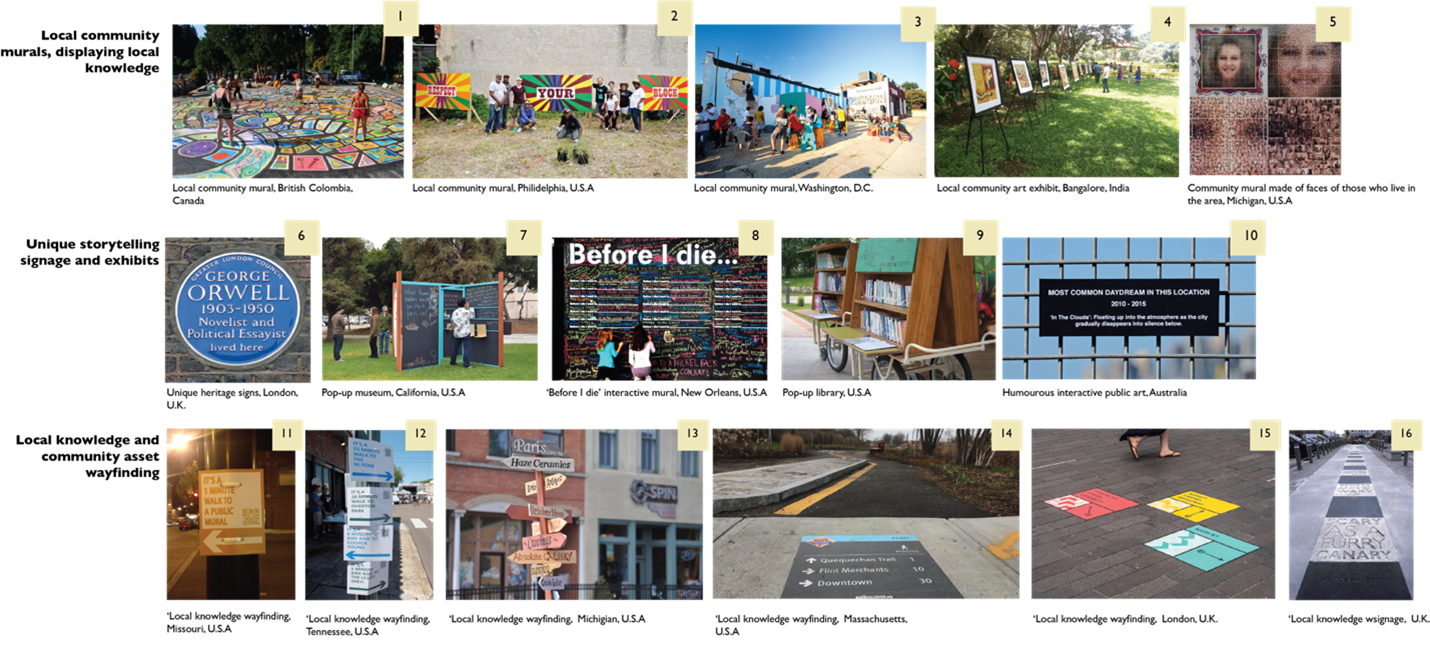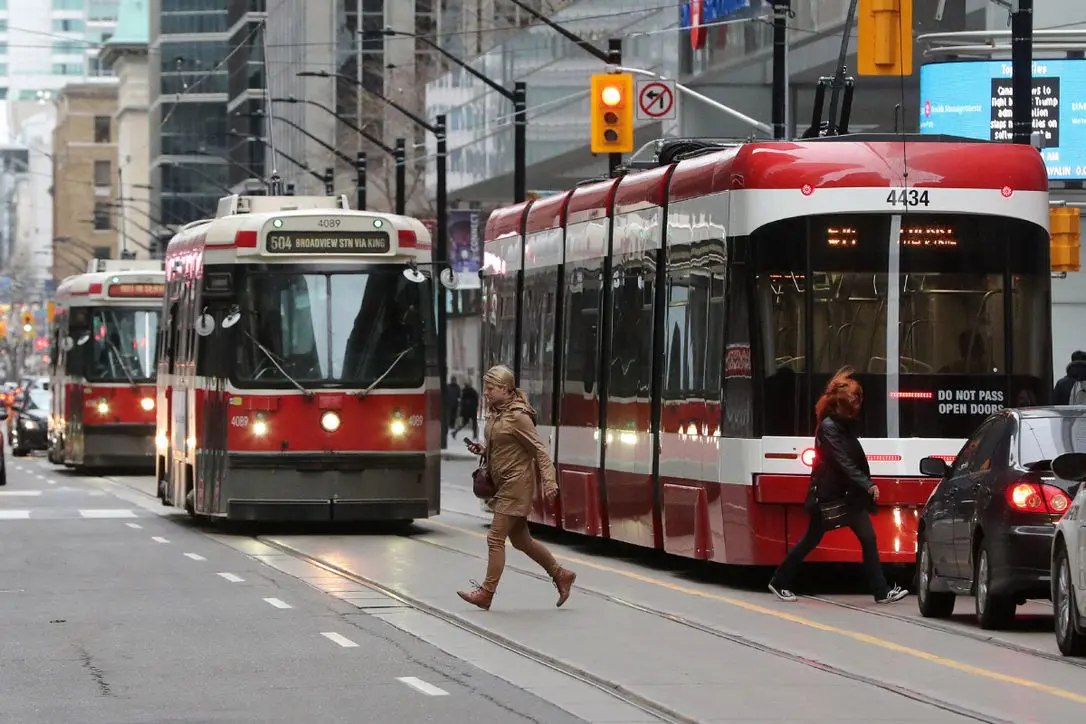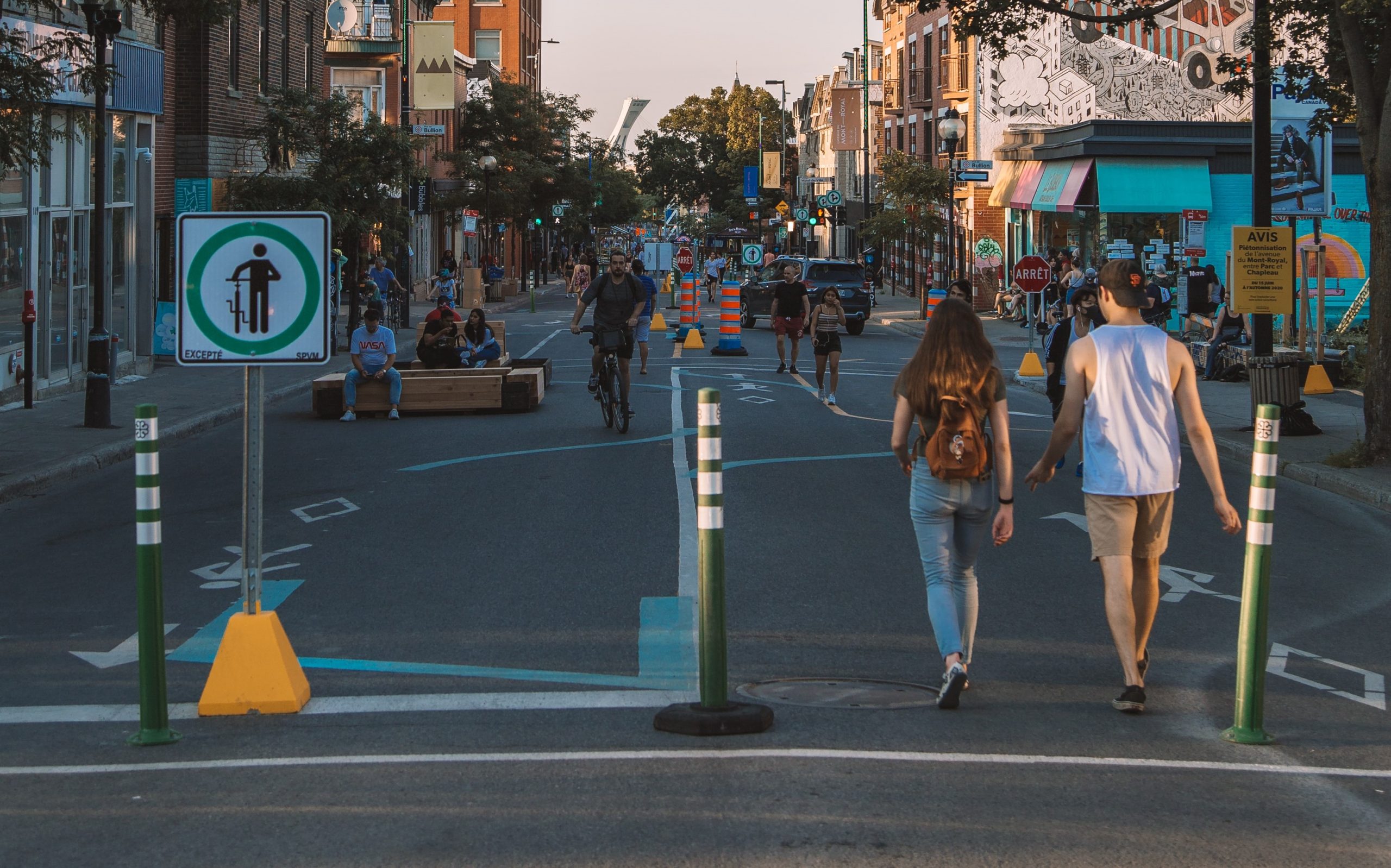Walking as a social activity in a post-pandemic world
Introduction: the potential of streets as socially resilient public spaces?
During the years of the pandemic, many “normal” expectations of the way we lived were uprooted. Through a grand effort of coming together by staying apart, social distancing, lockdowns and other mandated public health measures were implemented to keep us safe from the novel coronavirus. However, in these efforts, concerns surrounding mental health and loneliness increased. A worrisome trend as loneliness in most Canadian cities was already on the rise prior to the start of the pandemic (Holt-Lunstad, Smith & Layton, 2010; Glover, 2018). In this, many of the once vibrant and active public spaces of our cities were shuttered. Community centres and gathering spaces were closed. Public parks and squares stood empty. Main streets were reduced to only the essential retail, such as grocery. During the pandemic we saw a glimpse of how a city could look without what sociologist Oldenburg called third-places; places to see and meet others outside of home and work (Oldenburg & Brissett, 1982). Third-places are fundamental ways that we connect and relate with one another. In a time when only the uncertain was certain, this study looked to understand how streets could become resilient public spaces for social activity, and explore the potential of walking as a social activity during the pandemic.
Walking together and walking alone
The conversation of the potential social-value in walking is an ongoing one. Across public health research, there has been exploration into the mental health benefits of walking, specifically looking at its potential to curb loneliness (Hunter, Ball, & Sarmiento, 2018; Kelly et al., 2018). So far, what we know is that we need to know more, and further research is needed to fully understand walking as a social activity (Kelly et al., 2018). Particularly, although there have been social benefits noted for walking in groups (Hanson & Jones, 2015; Priest, 2007; Morris, Guell, & Pollard, 2019; South, Giuntoli, Kinsella, Carless, Long, & McKenna, 2017; Pollard, Guell, & Morris, 2020), there is still more to understand about the social value of walking alone.
In order to look into this issue, interviews were conducted with members of walking groups (n=12) during the COVID-19 lockdowns, between April 2020 and June 2020. Walking groups were located in Toronto, CAN and London, U.K. and looked to further scope the social value of walking groups, as well as the embodied differences in socialness between walking in group and walking alone.
Stories told and shared: the value of local knowledge
Unanimously, each participant of the study categorized their walking group as a social activity. The degree of socialness varied tremendously, with some forming close emotional relationships with the members of their groups, and others seeing the members of their groups as familiar faces. An interesting finding regarding the social-value of the walking groups was in the knowledge-sharing. Many participants recounted stories of how they learnt more about their community from different perspectives, and in this felt more connected both to the people in their walking groups but also their city. Per one participant:
“Whoever you’re walking with you get a different perspective from, and they bring their own body of knowledge.”
Walking group participant, Toronto
During the pandemic, it was this aspect of the walking group that the participants missed the most, and in walking alone they missed the ability to share in their surroundings with others.
Storytelling in the built-environment: streets as resilient public spaces
In response to this, this study found there is a potential to further explore storytelling as a means to increase the social potential of streets and walking alone. There is a myriad of ways that sharing stories through the interventions to the built-form can be achieved; from creative wayfinding signage to pop-up posters and exhibits (examples included in the image below). Creating built-environments that reflect local-community knowledge is a means to make streets more feel more sociable, even when in-person social activity is discouraged.

Exploring streets as resilient public spaces is an important effort in reclaiming more options for viable ‘third-places’ that can remain active-spaces in constantly changing conditions, that are also getting consistently lonelier. Moreover, it also allows for further exploration into walking alone as a social activity, drawing from the key social aspects of walking groups. In honouring the social potential of walking itself, we can start to think of the many ways that walking can connect us, beyond just a means of transportation from destination to destination.
The research described in this piece was not funded or completed as part of the mobilizing justice project. The views reflected are those of the author and do not necessarily reflect the views of the Mobilizing Justice project.
References
Glover, T. D. (2018). All the lonely people: Social isolation and the promise and pitfalls of leisure. Leisure Sciences, 40(1-2), 25-35.
Hanson, S., & Jones, A. (2015). Is there evidence that walking groups have health benefits? A systematic review and meta-analysis. British journal of sports medicine, 49(11), 710-715.
Holt-Lunstad, J., Smith, T. B., & Layton, J. B. (2010). Social relationships and mortality risk: a meta-analytic review. PLoS medicine, 7(7), e1000316.
Hunter, R. F., Ball, K., & Sarmiento, O. L. (2018). Socially awkward: how can we better promote walking as a social behaviour?. British journal of sports medicine, 52(12), 757-758.
Kelly, Paul, Chloë Williamson, Ailsa G. Niven, Ruth Hunter, Nanette Mutrie, and Justin Richards. “Walking on sunshine: scoping review of the evidence for walking and mental health.” British Journal of Sports Medicine 52, no. 12 (2018): 800-806.
Morris, S., Guell, C., & Pollard, T. M. (2019). Group walking as a “lifeline”: Understanding the place of outdoor walking groups in women’s lives. Social Science & Medicine, 238, 112489.
Oldenburg, R., & Brissett, D. (1982). The third place. Qualitative sociology, 5(4), 265-284.
Pollard, T. M., Guell, C., & Morris, S. (2020). Communal therapeutic mobility in group walking: A meta-ethnography. Social Science & Medicine, 262, 113241.
Priest, P. (2007). The healing balm effect: Using a walking group to feel better. Journal of health psychology, 12(1), 36-52.
South, J., Giuntoli, G., Kinsella, K., Carless, D., Long, J., & McKenna, J. (2017). Walking, connecting and befriending: a qualitative pilot study of participation in a lay-led walking group intervention. Journal of Transport & Health, 5, 16-26.
You may also like
 The Different Price Tags of Access: Transit, Housing Affordability and Demographics
The Different Price Tags of Access: Transit, Housing Affordability and Demographics
Introduction Building a new transit system? Great for commuters. Even better for housing prices. When cities build transit, nearby land and housing prices often shoot… Read More
 Developing Standards for Equity in Transportation Planning and Policy
Developing Standards for Equity in Transportation Planning and Policy
program at McMaster University. I began my PhD in September 2023 and have been part of the PhD MJ Researchers team since then. In a… Read More
 Making Space for Grief: Innovate Approaches to Knowledge Mobilization Through Art, Placemaking, and Cross-Sector Dialogue
Making Space for Grief: Innovate Approaches to Knowledge Mobilization Through Art, Placemaking, and Cross-Sector Dialogue
Grief—often defined as the process of coping with loss—ebbs and flows throughout our lives. Despite its universality, this deeply human experience is often constrained by… Read More
